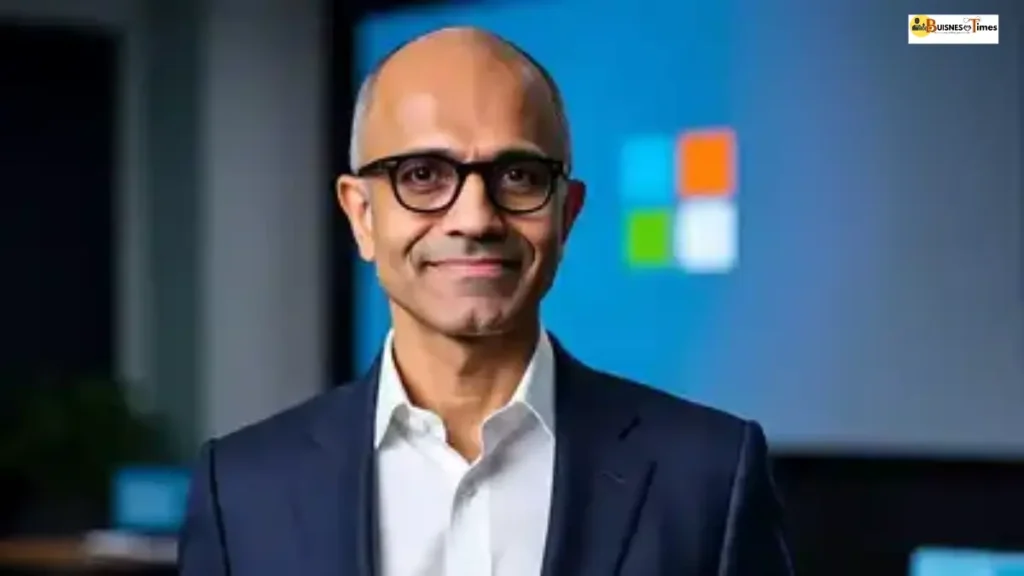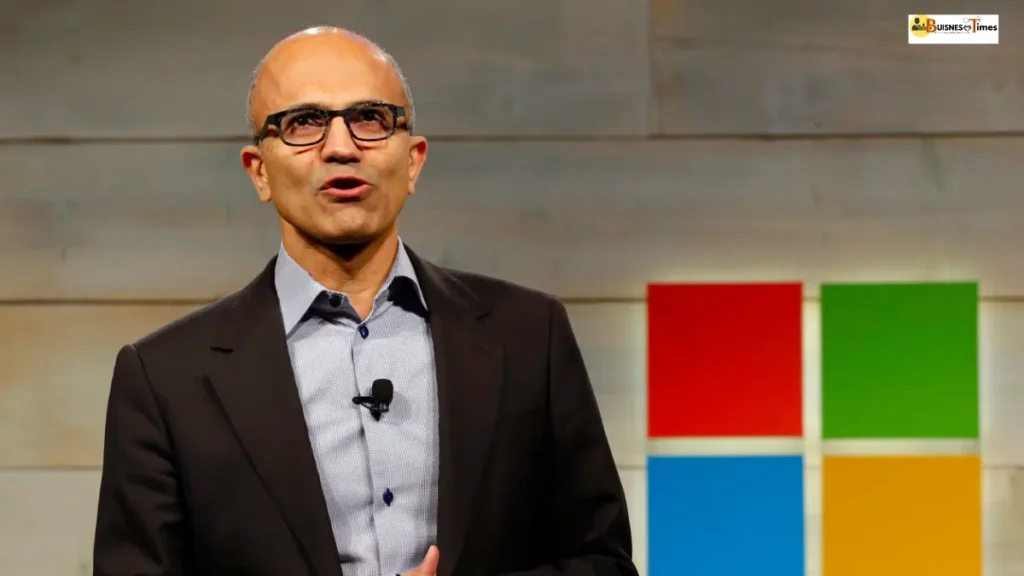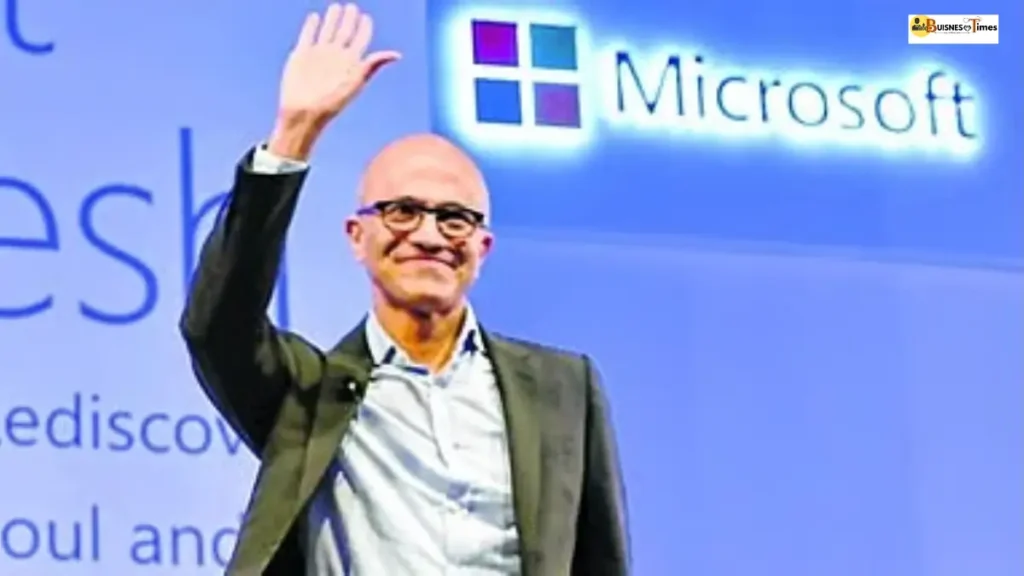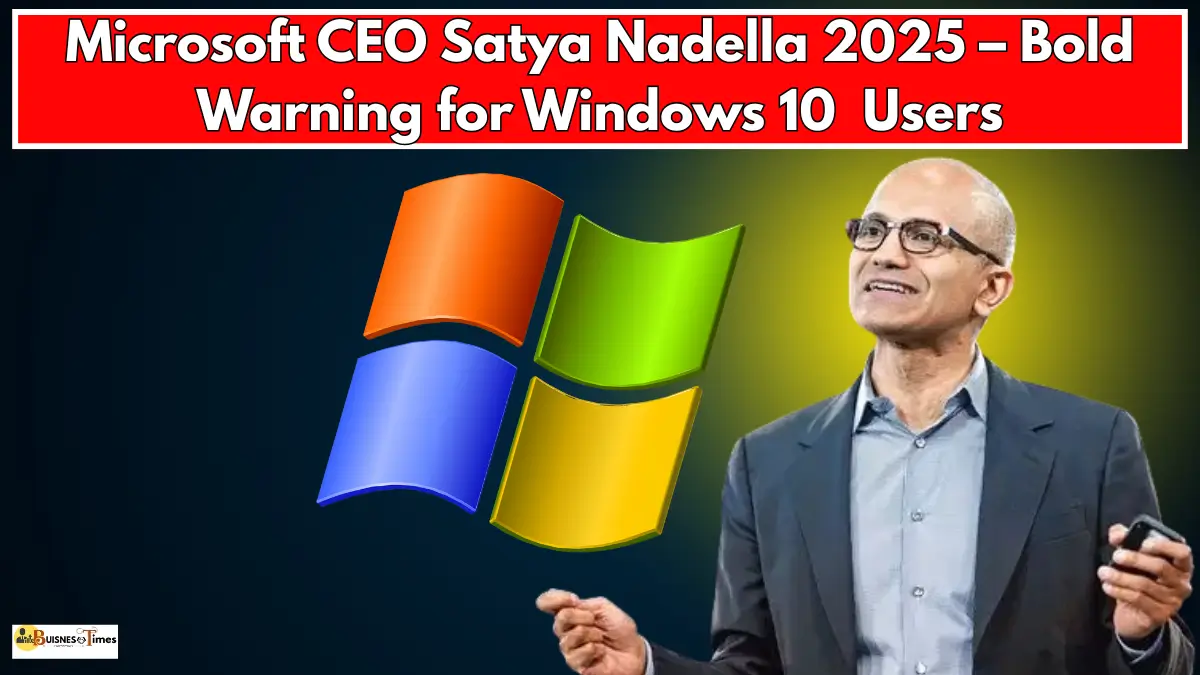In the fast-evolving world of technology, few topics have triggered as much debate recently as Microsoft’s decision to end support for Windows 10. While Apple’s iPhone 17 dominates global headlines, another battle is brewing in the PC world. A leading consumer advocacy group is urging Microsoft CEO Satya Nadella to rethink his company’s approach to Windows 10, warning that millions of users could be left vulnerable.
According to experts, around 400 million Windows 10 users are at risk of losing free security updates once official support ends on October 14, 2025. The decision has not only raised questions about user safety but has also sparked discussions on rising e-waste and the ethical responsibility of big tech companies.

Consumer Reports Issues Strong Warning
The consumer watchdog group Consumer Reports has taken a strong stance against Microsoft’s decision. They have sent a direct letter to Microsoft CEO Satya Nadella, urging him to extend free support for Windows 10. The letter emphasizes that cutting off updates would create widespread cybersecurity risks and force many users into unwanted upgrades.
For context, Windows 11, launched in 2021, comes with stricter hardware requirements that prevent many older PCs from upgrading. Features like TPM 2.0 module support and DirectX 12 drivers are mandatory, leaving older but still capable computers incompatible. This has forced many users and even enterprises to continue using Windows 10.
Consumer Reports highlighted that this decision is unfair to millions of individuals and businesses who cannot afford new hardware or the additional cost of purchasing Windows 11. They argue that Microsoft CEO Satya Nadella must prioritize user security over aggressive upgrade strategies.
The Scale of the Problem: 400 Million Devices
The biggest concern is the sheer number of devices still running Windows 10. Research estimates that approximately 400 million computers worldwide remain dependent on it. Without ongoing support, these systems will face significant risks from malware, ransomware, and other forms of cyberattacks.

In its letter, Consumer Reports told Microsoft CEO Satya Nadella that the company is effectively pushing users toward a dilemma: either continue using insecure systems or spend hundreds of dollars on newer machines. The watchdog group has labeled this policy a “forced obsolescence strategy”, one that could hurt both consumers and the environment.
Windows 11: A Step Forward, But Not for Everyone
When Windows 11 was unveiled, Microsoft positioned it as a forward-looking operating system with improved performance, better design, and modern compatibility. However, the system requirements turned out to be a roadblock for many.
The requirement of a TPM 2.0 security chip and advanced graphics compatibility meant that many otherwise powerful PCs suddenly became “outdated.” While big corporations with deep budgets could manage the transition, small businesses, schools, and low-income households faced difficulties.
Industry critics argue that Microsoft CEO Satya Nadella should adopt a more flexible strategy that balances progress with accessibility. For many users, especially in developing economies, buying new hardware just to meet compatibility requirements is not financially feasible.
Cybersecurity Risks Ahead
The most immediate concern remains cybersecurity. Without regular security patches, Windows 10 machines could become easy targets for hackers. This is particularly worrying for businesses and government institutions that still rely on the operating system.
Consumer Reports reminded Microsoft CEO Satya Nadella that the company has always stressed the importance of cybersecurity and user safety. Pulling back support for such a large base of users, they argue, contradicts Microsoft’s own mission.

Security experts also warn that once hackers know a system is no longer receiving updates, attacks on Windows 10 users will spike significantly. This risk makes the call for extended support not just logical but necessary.
Extended Security Updates: A Costly Solution
Microsoft has introduced the Extended Security Updates (ESUs) program, which allows users to continue receiving security updates after October 2025—for a fee. The cost is estimated at $30 per device per year. While this option may work for enterprises, it remains prohibitively expensive for individuals, small businesses, and educational institutions.
Consumer advocates argue that Microsoft CEO Satya Nadella must consider offering this service free of cost or at a much lower price. Otherwise, millions will be left behind simply because they cannot pay.
The E-Waste Challenge
Another pressing issue linked to this debate is electronic waste. The Public Interest Research Group (PIRG) estimates that the forced obsolescence of 400 million devices could lead to an unprecedented surge in discarded electronics.
Critics say that Microsoft CEO Satya Nadella should take environmental responsibility into account before finalizing such decisions. Encouraging mass upgrades without extending the life of existing systems could worsen global e-waste problems, which are already at alarming levels.
Industry Reactions
The tech industry has been divided in its response. Some analysts support Microsoft’s approach, claiming that forcing upgrades accelerates digital transformation. However, others believe that companies like Microsoft must adopt inclusive policies that don’t exclude a large segment of their customer base.
Supporters of Consumer Reports argue that Microsoft CEO Satya Nadella must lead by example, proving that big tech can balance profit with ethics. After all, Microsoft is one of the world’s richest companies and can easily afford to extend support for a few more years.
Enterprises Caught in the Middle
For enterprises, the situation is even more complicated. Many large corporations had only recently transitioned from Windows 7 to Windows 10 when Microsoft announced the upcoming end of support. The thought of migrating thousands of systems again in such a short time frame is a logistical and financial nightmare.
Business leaders are also pushing for Microsoft CEO Satya Nadella to reconsider the timeline. They argue that cutting off support too quickly will disrupt operations, reduce productivity, and increase costs.
What Lies Ahead?
So far, Microsoft has not officially responded to Consumer Reports’ letter. This silence has only fueled speculation about whether Microsoft CEO Satya Nadella will consider extending support or stand firm on the deadline.
If Microsoft proceeds as planned, the countdown to October 2025 will force millions of users to make tough choices. On the other hand, a reversal or extension of support could reinforce Microsoft’s reputation as a customer-first company.
The ongoing debate highlights a bigger question about how technology companies balance innovation, security, and responsibility. As things stand, Microsoft CEO Satya Nadella faces mounting pressure from consumer groups, businesses, and environmental advocates to rethink his strategy for Windows 10.
The next move from Microsoft could set a precedent for the entire tech industry. Whether it’s extending support, reducing ESU costs, or offering flexible upgrade solutions, the decision will impact hundreds of millions of users worldwide.
Until then, users remain in limbo—hoping that Microsoft CEO Satya Nadella will make a decision that balances progress with fairness.
Disclaimer
This article is based on publicly available reports and industry analyses regarding Microsoft’s Windows 10 support timeline. Readers are advised to verify official announcements from Microsoft for the most accurate updates.

